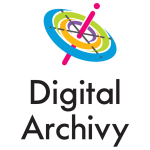”Content Is King and Storage Is Cheap”
We often hear “content is king” and “data storage is cheap.” But few will point out how difficult it is to identify and separate content from data. Content include Intellectual Property. But it also may include emails or text messages. Though content may be Top Dawg, long-term preservation is expensive. Formats, technical requirements and time frame affect storage costs and strategy. Yes, storage is cheap now, but over time, it becomes expensive and costs add up quickly.
Appraising data prior to ingest is invaluable. This builds trust in a system that users can use and find assets. Storage is cheaper than cheap when less data is stored.
Content Is King
Content lies in the Venn Diagram intersection sweet spot of People, Process and Technology. As a result, technology people, and process create content. Workflows can be well-defined if challenges are phased. Also, solutions must be multi-dimensional. The question becomes, how do creators and users find, access, and share the resources they need?
To some, it is unreasonably obtuse to invest in an organization’s organization. But many gradually will see that great value is added with a single unified system. One single source of truth may become a trusted digital repository. If costs are shared, and if it serves many users, an information infrastructure iscost-effective. Armed with content they need, users are empowered to seek, use, need, and share information.
Storage Is Cheap
Each network supports a wide network of extraordinary groups and unique individuals. While accessing information, users employ different processes and recognize their different needs and objectives. These include:
- Data for documentation of records
- Intellectual Property
- Sensitive or confidential data with PII
- Information licensed for limited usage
- Internal and external resources used for reference purposes
- Evidential and analytical data from reports and projects
- Communications
- Promotional and marketing materials
Information creates and adds value to the network. It frames every element of access, need, and use. An understanding of content usage also benefits users. An effective metadata schema will build a sound infrastructure. With guidance, a ttaxonomy can frame knowledge due to internal resources. Controlled vocabularies, preferred terms and acronyms, compiled from a style guide will fortify a trusted system and help with user adoption.
Consequently, we build effective and efficient information management systems. Institutions migrate structured and unstructured data to the Cloud. Sooner or later, they will need a strategy. Without a plan, they practically guarantee they will misunderstand their institutional knowledge.
Content is King, but context is queen and metadata is a prince.
Check out my experience from a list of clients with whom I’ve worked: http://www.digitalarchivy.com/clients/
Read More